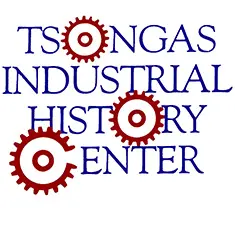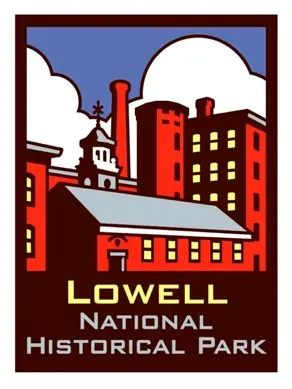Engineer It! Curriculum Framework Connections
All of our programs have been reviewed to ensure their relevance to state and national standards. (See the Education Program descriptions.)
Massachusetts State Standards
Grade 3 – Technology/Engineering
- ETS1. Engineering Design
- 3.3-5-ETS1-1. Define a simple design problem that reflects a need or a want. Include criteria for success and constraints on materials, time, or cost that a potential solution must meet.
- 3.3-5-ETS1-2. Generate several possible solutions to a given design problem. Compare each solution based on how well each is likely to meet the criteria and constraints of the design problem.
- 3.3-5-ETS1-4(MA). Gather information using various informational resources on possible solutions to a design problem. Present different representations of a design solution.
Grade 5 – Social Studies
- Topic 4. The Growth of the Republic
- 4. On a map of New England, locate cities and towns that played important roles in the development of the textile and machinery industries, whaling, shipping, and the China trade in the 18th and 19th centuries and give examples of the short- and long-term benefits and costs of these industries.
Grade 4 – Technology/Engineering
- ETS1. Engineering Design
- 4.3-5-ETS1-3. Plan and carry out tests of one or more design features of a given model or prototype in which variables are controlled and failure points are considered to identify which features need to be improved. Apply the results of tests to redesign a model or prototype.
- 4.3-5-ETS1-5(MA). Evaluate relevant design features that must be considered in building a model or prototype of a solution to a given design problem.
Grade 5 – Physical Science
- ETS3. Technological Systems
- 5.3-5-ETS3-1(MA). Use informational text to provide examples of improvements to existing technologies (innovations) and the development of new technologies (inventions). Recognize that technology is any modification of the natural or designed world done to fulfill human needs or wants.
Grade 6 – Technology/Engineering
- ETS1. Engineering Design
- 6.MS-ETS1-1. Define the criteria and constraints of a design problem with sufficient precision to ensure a successful solution. Include potential impacts on people and the natural environment that may limit possible solutions.
- ETS2. Materials, Tools, and Manufacturing
- 6.MS-ETS2-1(MA). Analyze and compare properties of metals, plastics, wood, and ceramics, including flexibility, ductility, hardness, thermal conductivity, electrical conductivity, and melting point.
- 6.MS-ETS2-2(MA). Given a design task, select appropriate materials based on specific properties needed in the construction of a solution.
- 6.MS-ETS2-3(MA). Choose and safely use appropriate measuring tools, hand tools, fasteners, and common hand-held power tools used to construct a prototype.
High School Technology/Engineering
- ETS4. Energy and Power Technologies
- HS-ETS4-5(MA). Explain how a machine converts energy, through mechanical means, to do work. Collect and analyze data to determine the efficiency of simple and complex machines.
New Hampshire State Standards
Tech/Engi Student Performance Outcomes (Grade 3-5)
- Practice design principles and processes in basic technological activities
Use information and data in the design process
- Demonstrate appropriate problem-solving strategies-techniques for solving technical problems. [materials have many different properties]
- Physical Science (3-4)
- Understand that materials are used in certain products based on their properties, such as strength and flexibility.
- Recognize that products are made using a combination of technologies, such as how an escalator uses both a pulley system and an electrical motor.
Tech/Engi Student Performance Outcomes (Grade 6-8)
- Demonstrate the accurate use of appropriate measuring tools to gather, manipulate, and communicate information.
- Apply academic concepts and practices in a technological setting
Physical Science (5-6, 7-8)
- Recognize that manufacturing processes use a variety of tools and machines to separate, form, combine and condition natural and synthetic materials.
- Understand that design features, such as size shape, weight, and function, must be considered when designing new technology.
Next Generation Science Standards
3rd-5th Grade – Engineering Design - Disciplinary Core Ideas
- 3-5-ETS1-1. Define a simple design problem reflecting a need or a want that includes specified criteria for success and constraints on materials, time, or cost.
- 3-5-ETS1-2. Generate and compare multiple possible solutions to a problem based on how well each is likely to meet the criteria and constraints of the problem.
- 3-5-ETS1-3. Plan and carry out fair tests in which variables are controlled and failure points are considered to identify aspects of a model or prototype that can be improved.
ETS1.A: Defining and Delimiting Engineering Problems
- Possible solutions to a problem are limited by available materials and resources (constraints). The success of a designed solution is determined by considering the desired features of a solution (criteria). Different proposals for solutions can be compared on the basis of how well each one meets the specified criteria for success or how well each takes the constraints into account. (3-5-ETS1-1)
ETS1.B: Developing Possible Solutions
- Research on a problem should be carried out before beginning to design a solution. Testing a solution involves investigating how well it performs under a range of likely conditions. (3-5-ETS1-2)
- At whatever stage, communicating with peers about proposed solutions is an important part of the design process, and shared ideas can lead to improved designs. (3-5-ETS1-2)
- Tests are often designed to identify failure points or difficulties, which suggest the elements of the design that need to be improved. (3-5-ETS1-3)
ETS1.C: Optimizing the Design Solution
- Different solutions need to be tested in order to determine which of them best solves the problem, given the criteria and the constraints. (3-5-ETS1-3)
Middle School (6th-8th Grade) - Engineering Design – Disciplinary Core Ideas
- MS-ETS1-1. Define the criteria and constraints of a design problem with sufficient precision to ensure a successful solution, taking into account relevant scientific principles and potential impacts on people and the natural environment that may limit possible solutions.
- MS-ETS1-2. Evaluate competing design solutions using a systematic process to determine how well they meet the criteria and constraints of the problem.
ETS1.A: Defining and Delimiting Engineering Problems
- The more precisely a design task’s criteria and constraints can be defined, the more likely it is that the designed solution will be successful. Specification of constraints includes consideration of scientific principles and other relevant knowledge that are likely to limit possible solutions. (MS-ETS1-1)
ETS1.B: Developing Possible Solutions
- There are systematic processes for evaluating solutions with respect to how well they meet the criteria and constraints of a problem. (MS-ETS1-2)


